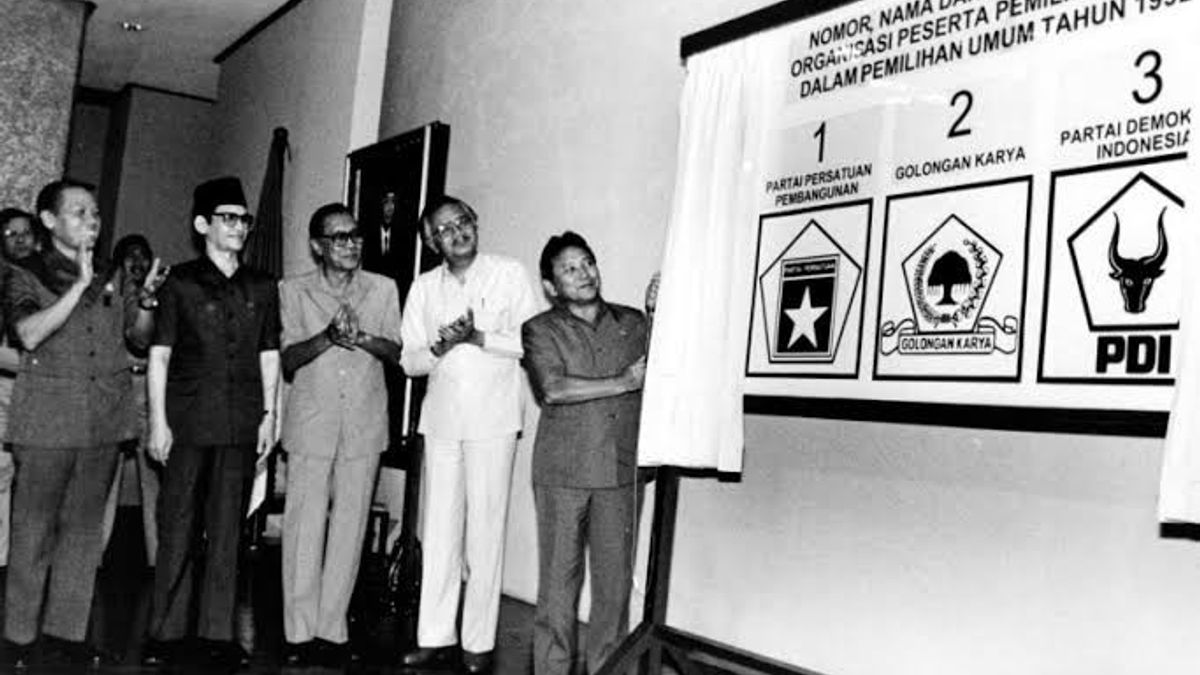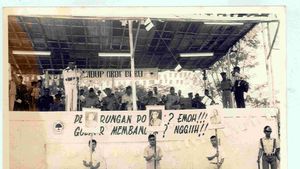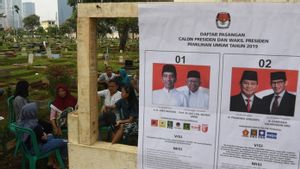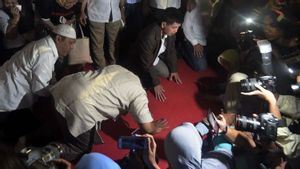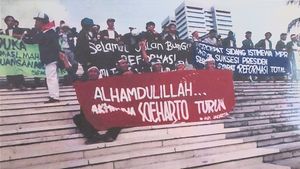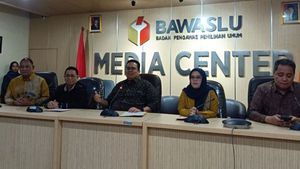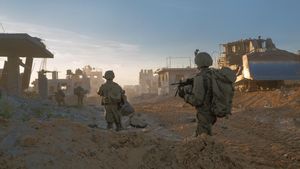JAKARTA The 1992 election will always be remembered as a moment of decline in Golkar's votes, as the main political force in Indonesia. Golkar, which has always won a landslide since the first election in the 1971 New Order era, slumped 5.06 percent.
The 1992 election was held simultaneously on June 9. The implementation format is still the same as the four New Order era elections that have been, 1971-1987. The three 1992 Election contestants consist of two political parties, the United Development Party (PPP) and the Indonesian Democratic Party (PDI), and the Golkar Group (Golkar). The election is intended to elect members of the legislature, not the president.
Held in 27 provinces in Indonesia and abroad, the 1992 election gave rise to surprising results. This is none other than the declining Golkar vote. If in the 1987 Golkar election, 73.11 percent of the votes were 73.11 percent, or 62,785,680 of the total 85,869,816, in 1992 they were nyungsep.
1992 Golkar received 66,599,331 votes out of a total of 97,789,534, or 68.10 percent. On the other hand, the participation of Golkar's contestants actually jumped. PPP, which in 1987 received 15.96 percent of the votes, jumped to 17 percent or 16,624,647 voters.
The largest jump was obtained by the PDI, with 14.89 percent or voting by 14,565,556 voters. This result increased considerably, compared to the 1987 General Election which received 10.93 percent of the vote. This fact is an interesting phenomenon, which is then widely interpreted as the beginning of the destruction of the New Order regime.
From the results of the 1992 election, Golkar lost 17 seats in the DPR, PPP increased by 1 seat, while PDI partyed with an additional 16 seats.
One of the figures predicting that the power of the New Order will collapse based on the results of the 1992 Election is Gus Dur.
Suharto's success will occur in 1998, said Gus Dur in 1992, as quoted by NU Online.
According to a senior political figure, Harry Tjan Silalahi, Golkar's failure to boost votes was due to internal problems. After a brilliant victory in the 1987 General Election, Golkar was a bit negligent in managing several of their potential activists. At the activist, then Balaelo, and these conditions were exploited by the PDI and PPP.
Golkar also doesn't seem to have any tips for attracting the middle class and novice voters, which is estimated at 17 million, said Harry Tjan, as outlined in the 1992 General Elections Flower book: An Evaluation.
When Golkar's votes fell and Suharto reportedly got angry, PDI as a party that was considered a party. If in the 1987 election PDI was only able to win 40 seats in the DPR out of a total of 400, then in 1992 they got 56 seats. Only 6 seats under PPP got 62. Even though Golkar's gains have fallen, they still dominate with 282 seats.
Although the addition of 16 PDI seats and 1 PPP seat does not mean much for the Indonesian political constellation because Golkar still won absolutely, it did not fail to be a slap to the authorities. The shift in votes in urban and rural areas is becoming interesting, because the symptoms of floating mass, or the mass floating, are getting clearer.
The political analyst who is now deceased, Riswandha Imawan, in a report from Tempo Magazine at that time said that the shift occurred because the villagers were starting to become aware of political rights. The literate figures that began to increase also affect politics in Indonesia.
Riswandha said that the pattern of polarclient relationships such as kiai and santri is fading. People begin to realize that political problems are a matter of humanity.
"Village people are starting to find it difficult to mobilize to support OPP, the Election Contesting Organization," said Riswandha.
The new middle class in urban areas is also believed to be the cause of the decline in Golkar's vote. This new middle class has the characteristics of being independent in determining political choices.
When they see government policies as unfair, especially for themselves, they shift their choice to other parties, said political observer Amir Santosa, quoted by Tempo on July 18, 1992.
According to Amir, the new middle class at that time was only about one million people, but that was enough to become a suppression group. They are able to change the political constellation in areas outside Jakarta, because of their more independent position.
In the 1992 election, Golkar's vote acquisition in Jakarta increased, but declined in areas such as Central Java and East Java, for example. According to Amir, ABRI's neutrality also affected political activities at that time.
"Parpol is starting to be bolder in campaigning. Dare to protest about the honesty of the voting process, protest about the honesty of the vote counting process," Amir added.
However, a somewhat different opinion was conveyed by an Indonesian political observer from the United States, Ben Anderson. This professor of political science from Cornell University is of the view that the 1992 election is still being driven by too many governments.
SEE ALSO:
"This is different from the 1955 election. At that time the government did not have much money to regulate this and that, so it had to be satisfied with the conditions as they are," Anderson said.
The 1992 election began on May 10, in the form of an early 23-day campaign period. After that, a quiet week was implemented, before finally entering the voting stage on June 9. There were 105,565,697 registered voters, but 97,789,534 who completed their rights at the voter.
The English, Chinese, Japanese, Arabic, and French versions are automatically generated by the AI. So there may still be inaccuracies in translating, please always see Indonesian as our main language. (system supported by DigitalSiber.id)
